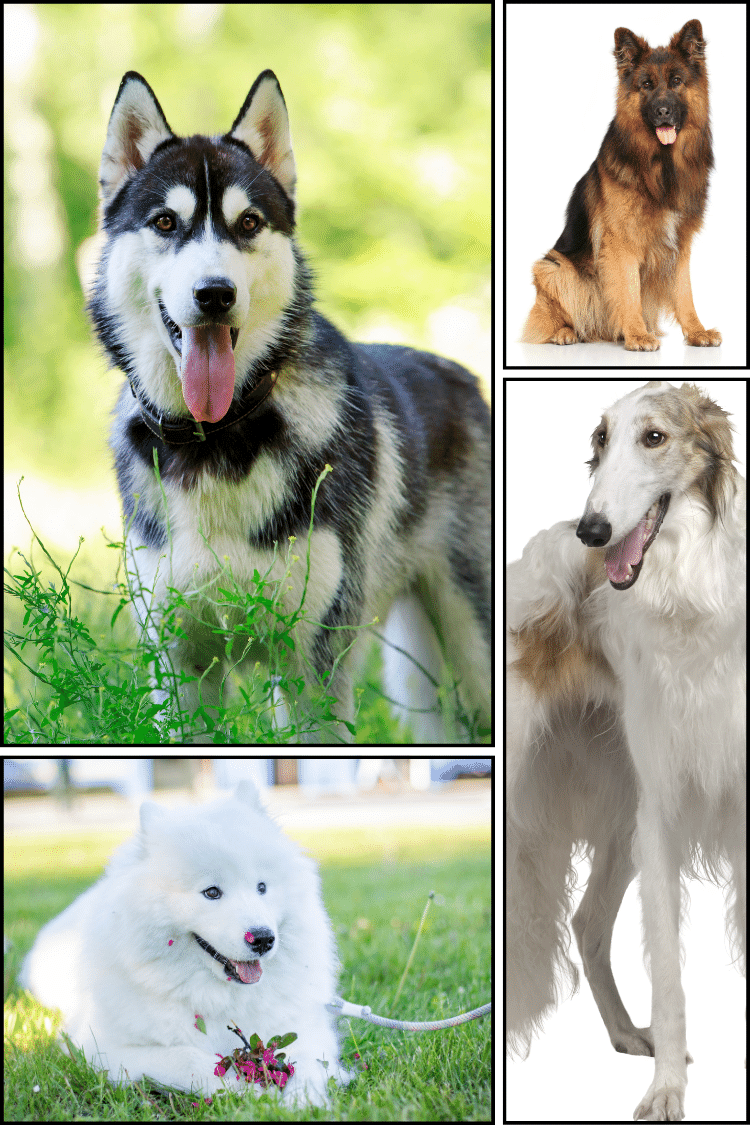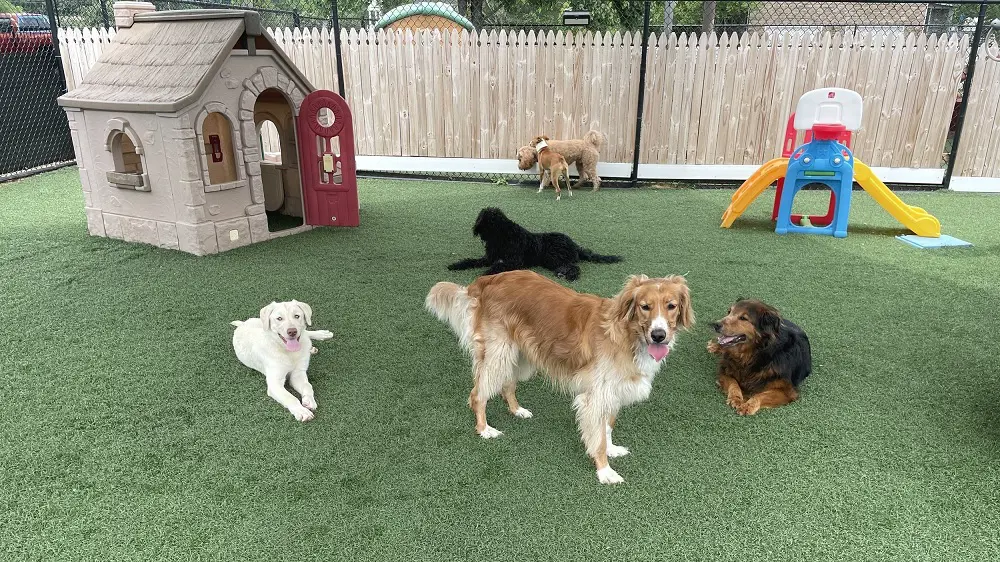20 Reasons Why Is Your Dog Acting Weird?

Dogs sometimes do things that have their owners dumbfounded, they can be in the form of subtle and highly noticeable changes within normal routine. Identifying the probable reasons for the weird acts of your dog is quite critical to addressing their need to make them healthy and happy.
Here are 20 possible reasons why your dog might be acting strange.
1. Changes in Routine
They are creatures of habit, and any change in their routine can lead to unusual behavior, maybe you changed your working hours or activities recently. This would mean that your dog is feeling a bit mixed up and anxious about the timing of the walk, mealtimes, or general playtime.
Even the slightest changes at home, such as changing the times for feeding or modifying walk times can substantially affect your dog's behavior. Your dog may act restless or overexcited due to change as he is trying to get used to the new routine.
Be patient during this period since your dog will require some time to get used to the changes around him.
2. Lack of Physical Activity
They are a mental and physical stimulation-rich animal that has to be happy and healthy, provided with activities or too few challenges they will get bored which may make them start behaving oddly. Boredom can then manifest in many ways, such as excessive chewing, digging, and barking.
Keep him busy with toys, and interactive games, and engage in activities that are going to challenge their mind such as puzzle toys or training sessions. If your dog is well-occupied, they are much less likely to get into strange or destructive behaviors.
Regular playtime walks and bonding activities keep them not only entertained but also help in strengthening your relationship, which in turn reduces the likelihood of weird behavior caused by boredom.
3. Separation Anxiety

Such a dog may then project odd behavior like excessive barking, chewing on furniture, or even urinating in the house, and quite often, they do this due to being stressed and scared from being away from a human companion. Separation anxiety in dogs is quite common mostly in those who have developed great attachments to their owners.
Do not overemotionalize when leaving or arriving home, as this will heighten the anxiety level of your dog, comfort your dog during your absence by giving them comforting toys or objects with your scent. Establish a routine for departures and arrivals as a way of managing separation anxiety.
4. Illness or Pain
Probably one of the most common symptoms of some underlying medical issues with a dog is a sudden behavior change, a dog can be turned into a strange creature by pain or illness, which would mean becoming cranky, overly lethargic, or even aggressive. The pet may become less active, refuse to eat, or show discomfort when moving.
If one feels that such behavioral changes in your dog can be linked to some sort of underlying medical condition, then it is very important to consult a veterinarian. The examination may rule out probable health problems so that appropriate treatment for the dog can be done.
5. Fear or Phobias
Even dogs suffer from phobias just like human beings, these can be associated with loud noises, new surroundings, or even some particular objects, the reaction to whatever they are scared of involves a lot of trembling, hiding, and useless barking. That is how a dog copes with something they feel in danger or insecure about.
Things that can help your dog overcome some of his fears and identification of the trigger itself are gradual desensitization to the trigger and a safe place where your dog can go and hide with no problems. Techniques of positive reinforcement that include rewarding calm behavior help build confidence over time.
6. Aging and Cognitive Decline

Old dogs will entail symptoms like confusion, disorientation and a change of behavior or Canine Cognitive Dysfunction. The dog will start to suffer from restlessness at night, anxiety, or withdrawal and may even forget the most established routine.
If you come to suspect your dog might be struggling with dementia, please, visit your veterinarian, some treatments and treatments reduce symptoms of this and bestow an improved quality of life for a dog. Keeping your dog's mind active by providing puzzle toys and interactive games will also help to slow down the cognitive decline.
7. Hunger or Thirst
Inadequate food and water in case dogs have resulted in getting ill-tempered, restless, or sometimes aggressive. Sudden changes in the appetite, either overeating or under-eating may indicate that something is wrong.
Satisfy the needs of the dog with a balanced diet according to his age, size, and activity level. Always ensure that the dog has fresh running water and feeds routinely.
If the dog still acts abnormal yet eats and drinks, visiting the vet might be the next thing to do. The doctors can rule out other health problems that might be affecting the appetite or hydration of your dog.
8. Seasonal Allergies
They can also fall victim to every changing season's allergens, the watering of the eyes and the itchy sneezing noises they emit tend to make them act out of character. They will be found scraping a lot more licking their paws excessively or acting generally uncomfortable.
Regular grooming and bathing relieve the period of allergen exposure to the coat and the skin of your dog. Where there is no option but to take your dog on a walk, try to walk him where there is the least amount of allergen as possible.
This will keep them from suffering through it uselessly and will allow them to be comfortable and behave more like their usual self.
9. Stress from Travel

If your dog has not traveled much, travel is going to be stressful for them, stress may be due to travel in the car, going by plane, or just a change of air so it is very stressful to them and leads to all sorts of crazy behavior. During and after travel your dog will overreact by panting, whining, or refusing to eat.
Some prep work goes a long way to helping your dog get used to travel, slowly introducing travel to your dog with short car rides or using a public transportation-compatible crate, can make traveling less intimidating. Offer some form of reassurance like a security object such as their favorite blanket or teddy to comfort them.
10. Lack of Mental Stimulation
Physical exercise is just as important to a dog's body, the same way mental stimulation is, a bored dog begins to act in unusual ways. This might come out as chewing furniture, barking excessively, or digging up holes despite they could be already grown. It is even likely to produce stress and agitation.
Have a selection of toys, puzzlers, and activities that will puzzle his mind, training sessions and interactive playing also work wonders in keeping him busy. This rotation keeps the dog from becoming bored and prevents behavioral issues.
11. New Environment
A dog is probably one of the best events in your life, but moving to a new place or having new surroundings could be traumatic for dogs, they become wary and confused by the strange sights, sounds, and smells. That can mean more barking, some hiding, and a general sense that they are uncomfortable as they settle into their new home.
Establish a familiar routine for them in the new environment as it will bring stability and reduce anxiety, he needs more help than just the acceptance and love of his parents. This is going to be troublesome because your dog has to spend time adjusting himself to the new surroundings.
12. Attention-Seeking Behavior

To deal with attention-demanding behavior make sure you have given enough physical and mental stimulation to the dog over the day, regular training, and a lot of bonding with them can keep their social and emotional needs in check.
This may be a strategy that has to be employed over time, ignoring the unwanted behavior and rewarding calm action importantly this will help reduce their attention-seeking antics. Exercising patience and coming to terms with your dog's needs, will allow for suitable help-giving, making them more secure in themselves and less likely to rebel for attention.
13. Overstimulation
Excessive noise, activity, or excitement can sometimes cause dogs to become over-stimulated and react in a way that you might not normally expect them to. If they are too stressed out by something, your dog may bark and jump around or go bonkers in other ways. He is probably overwhelmed by all of the sensory input and needs a break from everything.
Training your dog to lie down when told and giving them a specified stress-free zone will also minimize anxiety. You can always work with a trainer or behaviorist to learn methods of calming your dog, what to look for in their breeding, and how it affects them.
14. Fear of Thunderstorms
Lots of canines are afraid of thunderstorms, and that fear produces all sorts of weird behavior, your dog can shake, hide, or run away from the noise during a storm. The cause of the anxiety is usually triggered by ear-popping sounds and changes in atmospheric pressure too much for our pet's little bodies to handle!
Provide your dog with a safe and supportive environment to manage thunderstorms, it is beneficial to provide an unlit room, play soft music a thunder shirt or other wrapping methods that can reduce their anxiety as well. Providing comfort and assurance during the storm can help as well.
To see some pretty impressive results when the fear of thunder is quite severe, it also pays paying your veterinarian a visit for further support.
15. Socialization Issues

Good socialization is fundamental for the development of a dog if it fails in this respect will likely replicate strange behaviors. If you have not previously socialized your dog with different people and animals, they may become fearful or aggressive in new situations.
As your puppy grows older and more mature, it’s important to expose him or her safely, and steadily while never overwhelming them. Training classes or one-to-one work with a professional will help get your dog’s confidence back and improve their behavior towards others and visits to the dog park help him come out of his shell.
16. Hormonal Changes
While it can result from hormonal upheavals, which are fairly common in unspayed/unneutered dogs and normal to a certain extent, the geniculation of odors isn't just down the line. These changes can mean dogs become more aggressive, territorial, or even suffering from anxiety.
Both female dogs in heat and male dogs with a bitch in estrus can undergo significant hormonal changes that affect their behavior so spaying or neutering your dog is often recommended for hormonal-related behavior. This can decrease hyperactivity, aggressiveness, and many behavioral problems associated with hormonal fluctuations.
17. Changes in Diet
From a new variety of food to the timing in which you feed your dog throughout the day, and even what treats our dogs are eating we all have learned that deviating from their norm can sometimes send them for an unexpected loop. This can manifest itself as finicky eating, digestive upsets, or other kinds of discomfort.
In order not to change diet-related behavior, it should be done slowly with new foods, this lets your dog's stomach get used to it slower and also gives the possibility to prevent bad reactions. Keep a close eye on your dog, when you give them food because this will let you see faster if any problems do start to arise.
18. Hearing Loss
Dogs can also go deaf with age, which might make them even more prone to strange behavior. Something as simple as taking up a step or two may easily startle your hearing-challenged dog, often leading to excessive barking along with other behaviors that show less response in following your direction.
In case you think that the hearing or sense of your canine friend is not as good, then immediately bring him to the vet, they can also confirm whether that is actually what Is affecting your dog and offer some guidance on how to best care for them. Dog training using visual cues, like hand signs can be beneficial to keeping them doing what you want and feeling secure as well.
19. Pain or Discomfort

If your dog is injured, or has a dental problem or arthritis they may be more irritable and withdrawn or even less active than usual. They actually may even feel pain and will whine, or lick a certain area often, or they are flinchy when you try to pet them.
The only way to tell if your dog is symptomatic because of pain is by observing them and their behavior before, during, and after going potty carefully. Symptoms such as difficulty rising, and pain in certain regions of the body can be seen.
Treating your dog's pain not only helps to improve their quality of life but also aids in establishing normal behavior.
20. Recent Traumatic Experiences
When your dog has experienced something upside-down at some point, for illustration a vehicle accident, a shift confrontation, or possibly the instant change of just their life environment space they might storm whites. These may manifest in anything from heightened fearfulness or aggression to overt attempted avoidance of particular situations, things, or people.
Creating a safe environment to help your dog recover from their trauma is an important stage, for a severe or ongoing response to trauma in your dog, do not hesitate to consult a professional trainer or veterinary behaviorist. These trainers provide specialized methods to enable your dog to better recover from any trauma and help them get back to their previous lifestyle.
Top Lists






